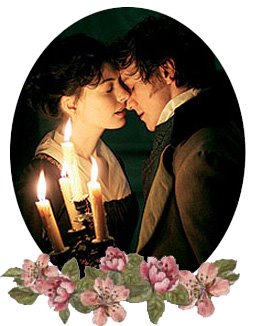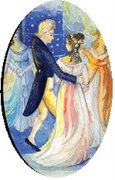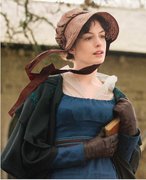 Okay, okay, I stole the title from Henry Fielding’s ‘History of Tom Jones, the Foundling’. A bit too thick a book with old style English to read, but that was one of the favourite books of Thomas Langlois ‘Tom’ Lefroy, the leading character in Becoming Jane, whom I talk about in this post.
Okay, okay, I stole the title from Henry Fielding’s ‘History of Tom Jones, the Foundling’. A bit too thick a book with old style English to read, but that was one of the favourite books of Thomas Langlois ‘Tom’ Lefroy, the leading character in Becoming Jane, whom I talk about in this post.
Upon looking at the painting of Tom Lefroy in this blog, a friend of mine commented that Tom had a ‘James Dean rebellious look’ in his eyes and countenance. He was indeed, and his rebellion and vivacity had, or at least once, won the heart of Jane Austen. But who was this young man with fair hair and piercing blue eyes?
Most of our knowledge on Tom Lefroy came from the Memoir of Chief Justice Lefroy, written by his son (whose name was also Thomas Lefroy) in 1871. Thomas Langlois Lefroy, the eldest son of Colonel Anthony Peter Lefroy of Limerick and Anne Gardiner, was born on January 8th 1776, less than a month after Jane Austen was born on December 16 1775. Tom Lefroy was the first son of the family; his parents had a total ten children (Tom was actually the sixth child with his five older sisters and his four younger brothers).
The Lefroy family was actually the descendants of the French Huguenots Lefroys that migrated to England in the 16th century (hence the name that sounds French). Tom's family lived in Ireland, where Tom would enroll in Trinity College of the University of Dublin in 1790 at the age of fourteen. Being a smart student, Tom was sponsored by his great uncle Benjamin Langlois to move to London in 1793 and study law at Lincoln’s Inn. Apparently, Tom excelled in school, inviting a very good comment from the Trinity college tutor Dr. H. Burrowe, later the Dean of Cork, in his letter to Mr. Lefroy on 21 April 1795. Below is Burrowe’s comments as quoted in Ray (2006):
'For his great success in College, I claim no credit. It was entirely the effect of his own talents and judicious diligence. It must be highly pleasing to you to hear that, within my memory, no young man has left our College with a higher character –None so much respected by all the Fellows.../ Of his conduct in London, however seducing its idleness and its evils, you need not have the slightest doubt. He is, in his religious principles, in his desire of knowledge, and his just ambition, fortified in every way.'

Back in December 1792, Benjamin Langlois also praised Tom as someone who ‘has everything in his temper and character that can conciliate affection. A good heart, a good mind, good sense, and as little to correct in him as I ever saw in one of his age’ (Ray 2006). This is of course a contrasting image of the Tom Lefroy we know in Becoming Jane, so I could either assume that: (1) the movie had a serious discrepancy with the real Tom Lefroy, or (2) Tom Lefroy had another side of him; a side that was not that goody-goody in comparison with the side his uncle and tutors knew about him. And this rather ‘bad’ side of him was the one that attracted Jane Austen. And I tend to go with the second option.
Why do I say that? Let’s go back to Jane’s letter to Cassandra on January 9 1796:
'You scold me so much in the nice long letter which I have this moment received from you, that I am almost afraid to tell you how my Irish friend and I behaved. Imagine to yourself everything most profligate and shocking in the way of dancing and sitting down together. I can expose myself however, only once more, because he leaves the country soon after next Friday, on which day we are to have a dance at Ashe after all. He is a very gentlemanlike, good-looking, pleasant young man, I assure you. But as to our having ever met, except at the three last balls, I cannot say much; for he is so excessively laughed at about me at Ashe, that he is ashamed of coming to Steventon, and ran away when we called on Mrs. Lefroy a few days ago.'

And this, also on the same day:
'After I had written the above, we received a visit from Mr. Tom Lefroy and his cousin George. The latter is really very well-behaved now; and as for the other, he has but one fault, which time will, I trust, entirely remove -- it is that his morning coat is a great deal too light. He is a very great admirer of Tom Jones, and therefore wears the same coloured clothes, I imagine, which he did when he was wounded.'
Now, honestly, from Jane’s words, I don’t see this Tom Lefroy (whose younger picture indeed showed a rebellious look) as the goody-goody flawless Tom Lefroy that Benjamin Langlois and Dr. Burrowe praised so much. Okay, I do believe that Tom was a very smart guy, and was truly entitled for the role of Chief Justice of Ireland later in his life. But I also believe that this Tom had another side in him, another ‘rather dark’ facet that allowed him to like the rather rebellious and sensual ‘History of Tom Jones’, a book which he discussed rather in details with Jane Austen.

Okay, enough interpretation on Tom’s character. It is possible that he had the ‘good’ and ‘bad’ sides, and Jane Austen saw, and was interested in, both sides. Sadly to Jane/Tom fans, the romance failed. As Tom came from a poor family with many children, it was important that Tom married well, and the 'mediocre' Jane Austen was definitely out of the question. In mid January 1796, Tom returned to London, possibly ‘encouraged’ by Mrs. Anne Lefroy. Jon Spence (2003) speculated (and I believe in his theory) that Jane actually went to see Tom/Benjamin Langlois later in August 1796 (see Letter from Cork Street), and that Mrs. Lefroy might try to make it up to the couple by introducing Jane to the Judge, but apparently the meeting was unsuccessful.
In December 1797, however, the Lefroys brought ‘a young nephew’ to dinner with the Chute family in Hampshire, at the point when Jane was returning from Bath (Tomalin 2000). We will never know (unless other secret documents appear) if Jane did meet Tom again then, but by that time Tom might already been called to serve in the Irish bar. Anyway, in November 1798 we know that Tom had or was in the process of departing to Ireland for that purpose (see JA's letter on November 17, 1798), and thus ended the known story of Jane Austen and Tom Lefroy.
Well, that, unless we considered Tom Lefroy’s ‘confession’ to nephew Thomas Edward Preston Lefroy (TEPL). On August 16 1869, TEPL wrote to James Edward Austen-Leigh (JEAL) a letter with the excerpt below:
‘You have already given in a few sentences the chief part of what my late venerable uncle told me. He did not state in what her fascination consisted, but he said in so many words that he was in love with her [Jane], although he qualifies his confession by saying it was boyish love. As this occurred in a friendly and private conversation, I feel some doubt whether I ought to make it public.’ (quoted in Chapman 1949, p. 58)
The letter was a response to JEAL’s letter, asking about the commonly known love history between TEPL’s uncle (Tom Lefroy) and JEAL’s aunt (Jane Austen). Well, Mr. Lefroy, this is a biased opinion, but I say that I should indeed thank you for disclosing the information to JEAL. Very precious information indeed.

Anyway, back to Tom Lefroy’s history. According to Wikipedia, after his failed romance with Jane Austen, Tom married Mary Paul in 1799 and had seven children from her. Being the smart guy he was, he made a successful career in Dublin, including a Member of Parliament (MP) of Ireland. In 1829 he made a controversial move of opposing the Bill to give Irish Catholics the vote. I’m not sure if Jane would agree to his move, though, but she had passed away beforehand, thus could not scold Tom for his impertinence.
Tom Lefroy’s career shone like a shooting star. According to Wikipedia, in 1830 he was elected to the House of Commons for the Dublin University seat (his eldest son Anthony Lefroy would later follow his lead to become an MP). Tom became a member of the Privy Council of Ireland in 1835. He continued to represent the University until he was appointed an Irish judge (as the ‘Baron of the Exchequer’) in 1841. In 1852, Tom Lefroy was appointed as Chief Justice and served until July 1866 when he was already 90.
Thomas Langlois Lefroy died three years later on May 4th 1869, leaving his seven children (his wife Mary Paul had died eleven years earlier in 1858). Interestingly, his first daughter was named ‘Jane’, a fact which was explored very well in the closing scene of Becoming Jane. From her analysis of the Memoir of Chief Justice Lefroy, Ray (2006) believed that Tom Lefroy’s letters during his time as an older man showed affections towards his wife. Walker (2007) also speculated that the name ‘Jane’ Lefroy was actually a tribute to Mrs. Mary Paul Lefroy’s mother, as Lady Paul’s Christian name was Jane as well. But of course I as a Jane/Tom fan prefer it to be referring to the Jane Austen that the young Tom Lefroy met years ago in Hampshire. And I think it was very possible for a man like Tom Lefroy to love, or at least devote his life for his wife and family, but still kept a room in the corner of his heart for his lost youthful love who had died half a century ago in 1817.
Reference:
Chapman, R. W. 1949, Jane Austen: Facts and Problems, Oxford University Press, reprint from 1948, Oxford.
Radovici, N. 1995, A Youthful Love: Jane Austen and Tom Lefroy?, Merlin Books Devon.
Ray, J. K. 2006, 'The Truth about Jane Austen and Tom Lefroy', Notes and Queries: Oxford Journals, vol. 53, no. 3, pp. 311-314.
Spence, J. 2003, Becoming Jane Austen, Continuum International Publishing Group, London.
Tomalin, C. 2000, Jane Austen: A Life, Penguin Books, London.
Walker, L. R. 2007, 'Jane Austen and Tom Lefroy: Stories', Persuasions On-line, vol. 27, no. 1.
Available: http://www.jasna.org/persuasions/on-line/vol27no1/walker.htm
Pic 1: the young Thomas Lefroy, painted by G. Engleheart in 1799, from Tomalin's Jane Austen: A Life (2000 edition, p. 271)Pic 2: James McAvoy as Tom Lefroy, Britfilms
Pic 3: Jane Austen and Tom Lefroy in Basingstoke Assembly
Pic 4: James McAvoy as Tom Lefroy (Jane Austen's Regency World, March/April 2007)
Pic 5: Chief Justice Thomas Lefroy, painted by W.H. Mote in 1855 (in the Memoir of Chief Justice Lefroy)
 Okay, okay, I stole the title from Henry Fielding’s ‘History of Tom Jones, the Foundling’. A bit too thick a book with old style English to read, but that was one of the favourite books of Thomas Langlois ‘Tom’ Lefroy, the leading character in Becoming Jane, whom I talk about in this post.
Okay, okay, I stole the title from Henry Fielding’s ‘History of Tom Jones, the Foundling’. A bit too thick a book with old style English to read, but that was one of the favourite books of Thomas Langlois ‘Tom’ Lefroy, the leading character in Becoming Jane, whom I talk about in this post.















































3 comments:
Very nicely done. I knew some of Tom LeFroy's biography, but you put it all together in one post. This bit of research took you lots of time, and your references, placed as they are, are impeccable. I should be so diligent on my blog, but I tend to get lazy. Kudos to you both.
Thanks a lot, Ms Place! Yeah, actually it did take me a few hours to do that, almost all my Saturday night, but I am glad that you, the Queen of Austen blog if I may say so, like it!
And there are several bits and pieces that I have yet to put because of the lack of space and reference, but I will do that in the next Lefroy-related post.
I find this comment enormously fascinating. I particullary enjoyed your reverance for Austen, yet not churlish enough to leap into untoward speculations as to the paramours possible interactions in Bath.
Post a Comment